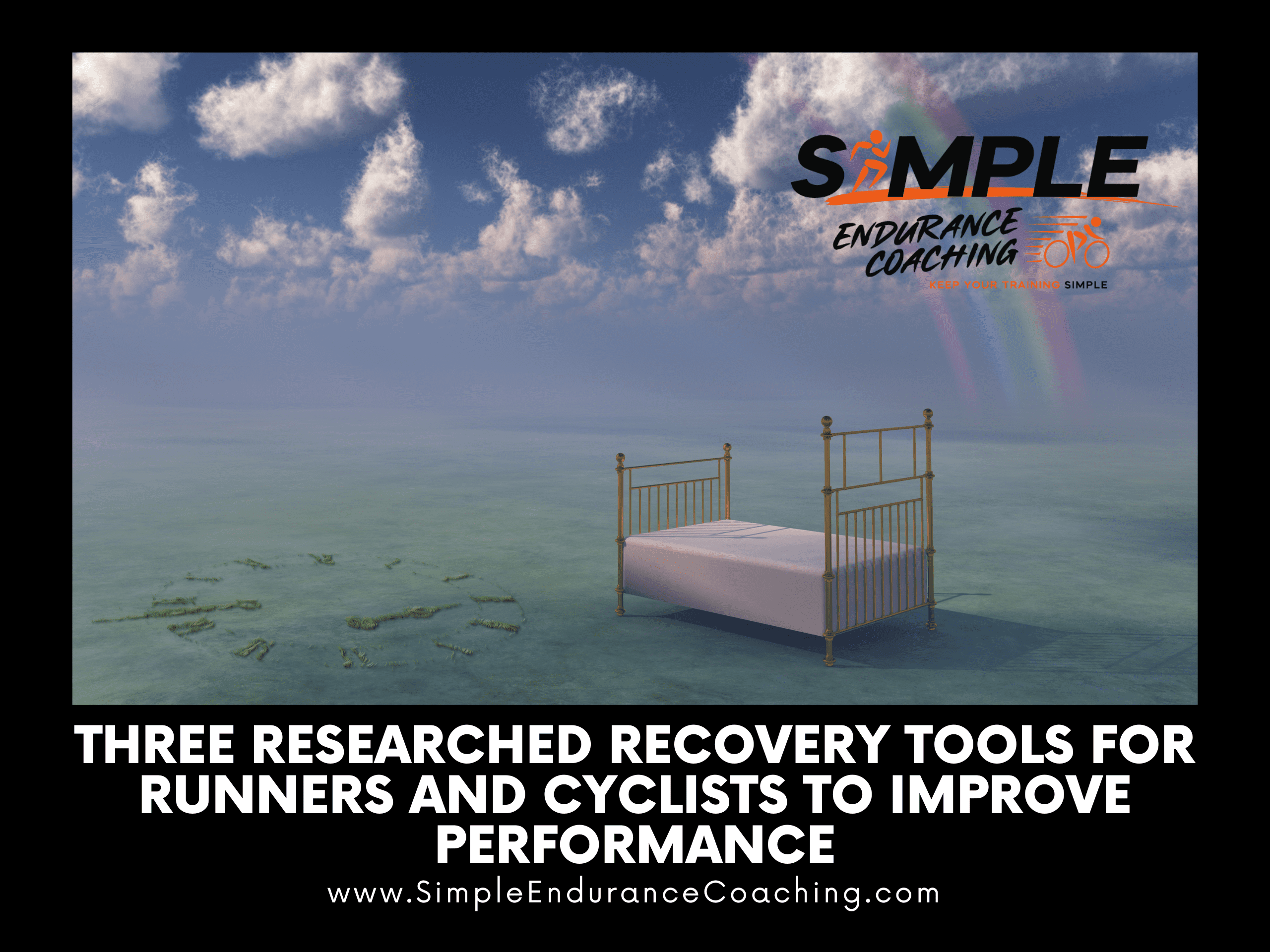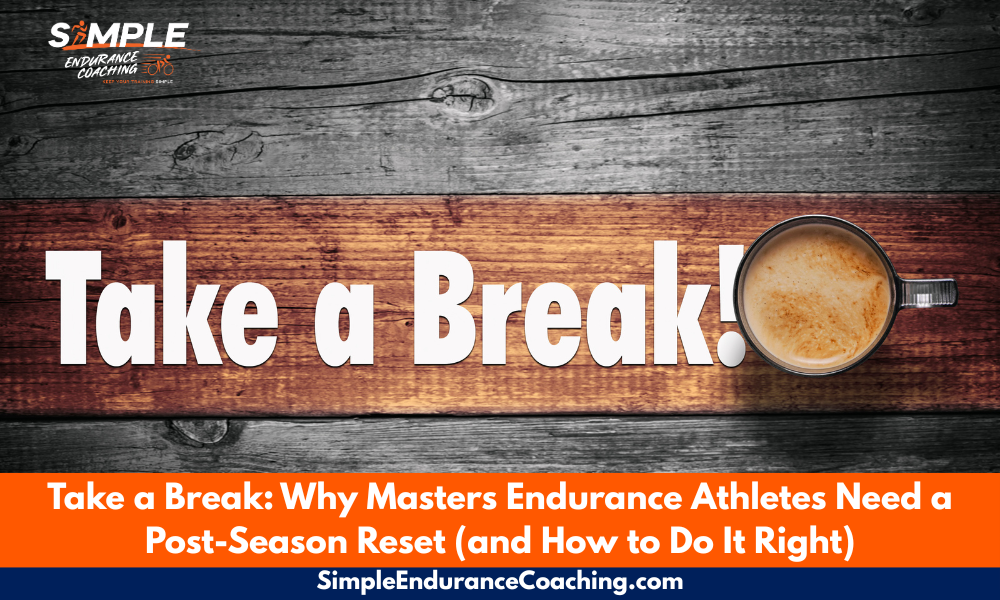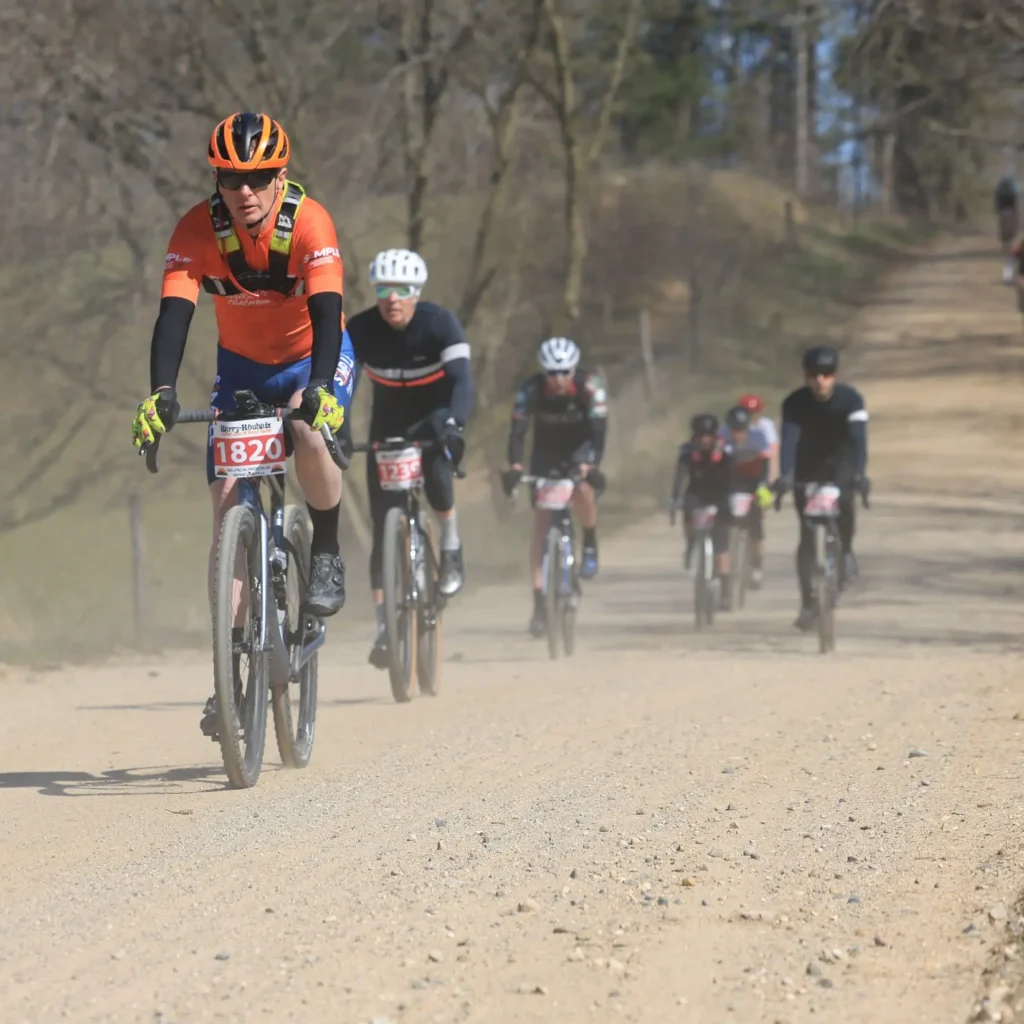Recovery for Runners and Cyclists: 3 Researched Tools to Boost Performance
Sleep, meditation or mindfulness, and good nutrition are proven tools of recovery are essential for all cyclists and runners.
Cyclists and runners need to worry about recovery after exercising because during a workout, the body undergoes stress and experiences muscle breakdown.
If the body is not given enough time to recover, it can result in overtraining, injury, and decreased performance.
Research has shown that recovery is a crucial part of training to maximize performance and avoid overreaching and overtraining syndromes.
Incorporating sleep, proper nutrition, and mindfulness into a post-workout routine is essential for any cyclist or runner looking to perform at their best.

Sleep is the most effective recovery tool
As athletes, we often focus on training hard and pushing ourselves to the limit.
But what about recovery?
Sleep is perhaps the most important tool in your arsenal when it comes to recovering from endurance training.
When you sleep, your body goes into repair mode, working to rebuild muscles and replenish energy stores.
Not getting enough sleep can lead to decreased performance, increased risk of injury, and even illness. So how much sleep do you need? It varies from person to person but aim for at least 7-8 hours per night.
Quality of sleep is also important – try implementing a bedtime routine that helps you wind down before bed such as reading or stretching.
Avoid screens at least an hour before bedtime as they emit blue light which disrupts melatonin production.
Incorporating naps throughout the day may help too!
Even just a short nap can improve mood and cognitive function while reducing stress levels.
Remember: prioritizing quality rest means prioritizing better performance in all aspects of life!
Christie Aschwanden, in her book Good to Go, says “Sleep is the number one thing athletes can do to bounce back from their training. It’s like the cake of recovery. Everything else is just icing.”
Mindfulness will help your recovery
Aschwanden says what also works for recovery is anything that slows us down, like meditation.
Researchers think that’s why massage and floating have some value to some people because they force us to slow down and relax.
In today’s fast-paced world, it is common to feel stressed out and overwhelmed.
Being in a constant state of stress can have harmful effects on both your mental and physical health, which ultimately affects your recovery.
That’s where mindfulness comes in.
Mindfulness is the practice of being present in the moment without judgment.
It promotes a sense of calmness and relaxation, which can help reduce stress levels and improve overall well-being.
When it comes to recovery, incorporating mindfulness into your routine can be incredibly beneficial.
By practicing mindfulness techniques such as deep breathing exercises or meditation, you give yourself time to rest and recharge both mentally and physically.
Studies have shown that mindfulness-based interventions are effective in reducing symptoms of anxiety, depression, chronic pain, and stress-related disorders.
Practicing mindfulness has also been linked to improved sleep quality and increased immune function – two important factors for optimal recovery.
Incorporating even just a few minutes of mindful practices into your daily routine can make a significant impact on your overall recovery process.
Yoga, mobility, and active movement
Yoga, mobility, and active movement are all great tools to aid in recovery.
These practices help to increase flexibility, improve range of motion, promote blood flow, and reduce inflammation.
Yoga is a wonderful way to stretch out tight muscles and release tension.
It can also be used as a form of meditation which helps reduce stress levels by working on your breathing.
Nasal breathing, in particular, can calm your central nervous system.
By engaging in yoga regularly, you may find that your body recovers more quickly after workouts.
Mobility work involves exercises that help improve joint mobility and stability.
This type of training can help with injury prevention by improving the overall function of the joints.
Active movement refers to low-intensity exercise such as walking or swimming. Engaging in these activities on rest days can be beneficial for promoting blood flow which aids in clearing metabolic waste from your system.
Incorporating yoga, mobility work, and active movement into your routine can have a significant impact on your recovery process.
Nutrition can play a key role in recovery for runners
Nutrition plays a key role in post-workout recovery after cycling or running.
The following tips can help you optimize your recovery and get back on the saddle faster:
First, try to consume a combination of carbohydrates and protein within 30 minutes of completing your workout to replenish glycogen stores and build muscle.
Second, stay hydrated by drinking plenty of fluids before, during and after your workout. Electrolyte-rich sports drinks can also be helpful in restoring electrolyte balance.
Third, include anti-inflammatory foods like fruits, vegetables and healthy fats in your post-workout meals to reduce inflammation and speed up recovery.
Other tools may aid recovery even with placebo effect
While sleep, nutrition and mobility work are considered the most effective for recovery, there are other tools that may help as well.
Some of these tools include foam rolling, compression garments, and ice baths.
Foam rolling is a popular tool used to aid in muscle recovery after intense workouts.
It involves using a foam roller to apply pressure to tight muscles which can improve circulation and reduce inflammation.
Compression garments have also become increasingly popular among athletes for their apparent ability to improve blood flow and reduce soreness in muscles post-workout.
These garments provide graduated compression which can help push deoxygenated blood back towards the heart more efficiently.
Ice baths are another common tool used by athletes for recovery.
They’ve been shown to decrease inflammation and soreness by constricting blood vessels while increasing oxygen levels throughout the body.
One interesting aspect of recovery is the power of placebo effects.
Aschwanden says there hasn’t been conclusive research that any modalities except sleep and mindfulness work.
However, studies have found that placebos can actually produce measurable physical changes in our bodies through hormonal responses triggered by expectation or belief alone.
So while research suggests foam rollers, massage, trigger point guns, and other modalities may not be effective, they can feel good.
Aschwanden says the key to the success of these tools like ice baths, oxygen, epsom floating baths, etc. is that they make us “feel” like something has changed in us.
That placebo effect may have an actual effect on us.
Research suggests most effective tools
Recovery is a crucial aspect of improving performance and recovering from training, especially for endurance athletes like cyclists and runners.
While there are many tools available to aid in recovery, sleep remains the most effective tool, followed by nutrition and mobility work.
Mindfulness practices such as meditation can also help with recovery by reducing stress levels and promoting relaxation.
Yoga, mobility exercises, and active movement can improve range of motion and flexibility while reducing muscle tension.
Other tools such as foam rolling, compression garments, ice baths may provide some benefits through the placebo effect.
However, research suggests that these tools have limited evidence supporting their effectiveness.
Ultimately, it’s essential to listen to your body’s needs when it comes to recovery.
Try incorporating different techniques into your routine but pay attention to what works best for you personally.
With proper rest and care for your body after training sessions or competitions will help you perform better in all aspects of life!
Three things to consider to help cyclists and runners recover from workouts
1. Sleep is the most important and most scientifically proven recovery aid. If you don’t get enough sleep, your training time is wasted. 2. Getting good nutrition before, during, and after your training helps build you back up for the next workout. 3. Yoga, for the mobility and breath work, can aid your recovery.
Want to know more about tools of recovery for runners and cyclists??
If you liked this article, please share it with others.
Do you have questions? Email me at paulw at SimpleEnduranceCoaching.com
I support a limited number of cyclists and runners achieve their goals with more strength, endurance, and mobility.
Contact me or sign up for Virtual Coffee so we can discuss your goals, ask questions, and talk about making your endurance training more effective, fun, and Simple.
You can also opt-in to receive my weekly blog posts about what works in endurance sports.
Paul Warloski is a:
- USA Cycling Level 3 Coach
- RRCA Running Coach
- Training Peaks Level 2 Coach
- RYT-200 Yoga Instructor
- Certified Personal Trainer




